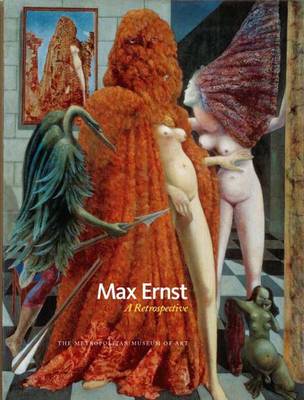Max Ernst (1891-1976) was a pivotal figure in the history of twentieth-century art. A leader of the Dada movement in Germany, he later joined the circle of writers and artists gathered in Paris around Andre Breton, the unofficial founder of the Surrealist movement. At the outset of World War II, Ernst fled Germany for the United States, first going to New York and eventually settling in Sedona, Arizona. Ernst returned to Europe in 1950 and continued to explore Surrealist imagery and methods throughout his life. This important book accompanies the first retrospective exhibition of Ernst's work held in the United States in thirty years. It examines his pioneering accomplishments in painting, collage, and sculpture and considers his use of the techniques of frottage, grattage, and decalcomania. Also featured are Ernst's unique collage novels - narratives comprising disparate images culled from nineteenth-century engravings and combined in surreal, unsettling compositions.
Leading scholars write on various aspects of Ernst's life and art: Werner Spies on the Ernst in America; Ludger Derenthal on Ernst and politics; Pepe Karmel on Ernst and contemporary art; Thomas Gaehtgens on Ernst and the old masters; and Robert Storr on the collage novels. This book accompanies an exhibition at the Metropolitan Museum of Art, to run between April 4-July 10, 2005.
- ISBN10 0300107188
- ISBN13 9780300107180
- Publish Date 11 April 2005 (first published 1 January 1972)
- Publish Status Out of Print
- Out of Print 18 March 2011
- Publish Country US
- Imprint Yale University Press
- Format Hardcover
- Pages 328
- Language English
